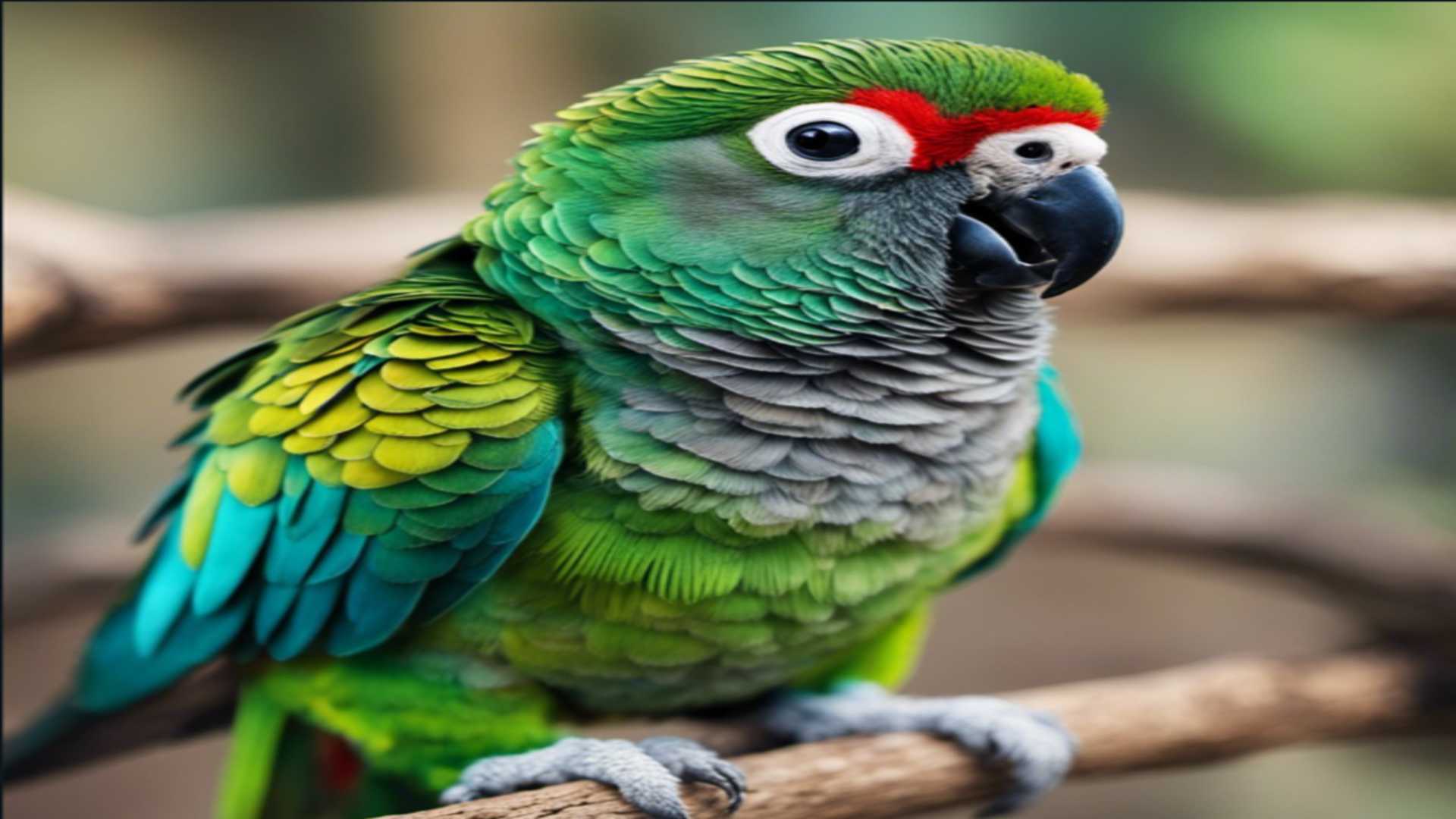The world of seagulls is fascinating and full of complex behaviors, especially when it comes to the differences between female and male seagulls. While there are many similarities between the two genders, there are also some distinct traits that separate them.
In this comprehensive guide, we will delve into the differences between female seagulls and males, including their respective behaviors and habits. We will also explore the different roles each gender plays in the seagull life cycle.
By the end of this article, you’ll have a better understanding of the unique differences between female seagulls and males.
Sit back, grab a cup of coffee, and let’s get into the world of seagulls!
Male vs Female Seagulls: An Overview
Female seagulls and males can be distinguished by various physical and behavioral characteristics. In terms of appearance, male vs female seagulls might have subtle differences in size and coloration.
Females are usually slightly smaller and have more muted color patterns compared to the males, who tend to be larger and display brighter plumage.
Also, when it comes to nesting and feeding behaviors, female seagulls are often more attentive to their young and may take on the primary caregiving responsibilities.
On the other hand, male seagulls are typically more focused on defending their territory and securing food sources.
Overall, understanding the differences between female and male seagulls can provide valuable insights into their roles within the ecosystem.
How to tell if a seagull is male or female?
When it comes to discerning between female and male seagulls, there are a few key indicators to look out for. One way to tell if a seagull is male or female is by observing their size and behavior.
Typically, male seagulls are larger in size and more aggressive compared to their female counterparts.
Another way to distinguish between the two is by examining their plumage. Male seagulls tend to have more vibrant coloring and striking patterns on their feathers, while female seagulls often have more subdued and mottled markings.
Seagull biology and behavior
Without diving too much into the technical aspects of seagull biology, it’s important to know that there are some physical and behavioral differences between the two genders.
Seagull taxonomy
Let’s begin with the seagull taxonomy. While the term ‘seagull’ is often used, it’s important to note that there is actually no single ‘seagull’ species.
Instead, seagulls are part of a larger family of birds known as Laridae, which includes over 50 species of gulls, as well as terns and skimmers. Seagulls can be found all over the world, and they vary in size, color, and behavior.
Seagull communication
Now, onto seagull communication. Just like us, seagulls have different ways of communicating with each other.
They use a range of vocalizations, including calls and songs, to interact with one another and convey various messages. Some of the more common vocalizations include:
- High-pitched calls. These are often used to alert other gulls of potential threats or changes in their environment, like predators.
- Chirping. Chirping is used by gulls during mating rituals, to bond with their partners, or as a means of social communication.
- Growls and hissing. These sounds are made when gulls feel threatened or are defending their territory.
In addition to vocalizations, seagulls also use body language to communicate. For example, they’ll extend their wings, stand tall, and puff up their chest during mating or territorial displays.
Seagull feeding habits
Gulls are known for their opportunistic feeding habits. Here are the main types of food they consume:
- Fish. As coastal birds, many seagull species feed primarily on fish.
- Carrion. Gulls often scavenge on carcasses and other remains.
- Invertebrates. Gulls feed on a variety of invertebrates, such as crabs, sea snails, and mussels.
- Seeds and berries. Some species of gulls also include plant material in their diet, particularly in non-coastal areas.
Gulls often watch humans and follow fishing boats in search of food.
Seagull versatility
Seagull versatility is one of the key characteristics that make them such fascinating seabirds. Gulls are known for their ability to adapt to various environments.
They can be found in coastal areas, urban settings, and even garbage dumps, where they’ve become expert scavengers.
We can’t also go without mentioning their exceptional flying abilities. Gulls are able to soar at high altitudes, hover in place, or even glide along the water’s surface.
This flying expertise allows them to perform impressive aerial acrobatics and navigate different terrains with ease.
So, there you have it—a brief exploration of seagull biology and behavior that highlights the fascinating world of these adaptable and resourceful seabirds.
Comparison of female and male seagulls
Hold on! We do have more to learn about seagulls! Let’s now take a closer look at the differences between female and male seagulls.
Color and plumage
We’ve noticed that there are subtle differences in the color and plumage of female and male seagulls.
Both sexes generally have a similar overall appearance, with white heads and underparts, gray wings, and black-tipped feathers.
However, males tend to have slightly brighter plumage, while females may have duller or more mottled hues. It’s important to note that these variations can be quite subtle and might not be noticed by casual observers.
Size and shape
Another area where we see differences between female and male seagulls is their size and shape.
Males are generally larger, with a more robust body and a slightly longer bill. In contrast, females tend to be smaller and have a more delicate appearance overall. Here’s a quick comparison:
| Attribute | Female Seagulls | Male Seagulls |
|---|---|---|
| Size | Smaller | Larger |
| Bill | Shorter | Longer |
Behavior differences
When it comes to behavior, we’ve observed that female and male seagulls exhibit distinct patterns.
Males are often more aggressive and territorial, protecting their nesting sites and food resources.
They can also be more vocal, engaging in loud calls to assert dominance or attract mates that make sense, don’t you think so?
Even humans sometimes tend to behave in a similar way! Ahah. On the other hand, females are generally more nurturing and focused on caring for the young.
They spend more time incubating eggs and protecting their offspring, while the males primarily focus on providing food. This division of tasks helps ensure the well-being of the seagull family.
Mating partners
Lastly, let’s discuss the mating partners of female and male seagulls. In most cases, these birds form monogamous pair bonds that last for an entire breeding season or even for life.
Both sexes are involved in the courtship process, with males often performing elaborate displays and presenting gifts (such as food) to win the favor of a potential mate.
Once bonded, the female and male seagulls work together to build a nest, lay eggs, and raise their offspring.
The strong partnership between the two contributes to the overall success of their family and helps ensure the continuation of the seagull species.
Identification features
Another aspect worth considering when exploring the differences between female and male seagulls is what features we can use to tell them apart.
Herring Gull details
Let us start with the identifications of Herring Gulls, which have a few distinguishing features. The adult males have a white head, neck, and underparts, with a gray back and customarily black-tipped wings.
In contrast, females have a more brownish-gray coloration, particularly on their upperparts, making the difference more noticeable. The regional differences can be seen in the coloring, with Western Herring Gulls having darker back colors than their Eastern counterparts.
Ring-Billed Gull features
Next, we have Ring-Billed Gulls. These birds share some characteristics with Herring Gulls but have some distinctive traits to tell them apart. Adult males have a white head, light gray back, and broad, black wingtips. The females, like Herring Gulls, have duller brownish-gray upperparts.
Here are some handy identification traits for Ring-Billed Gulls:
- Bill. A distinct black ring near the tip
- Legs. Yellow in color
- Relative Size. Smaller than Herring Gulls (measurements: wingspan 46-50 inches)
Great Black-Backed Gull characteristics
Great Black-Backed Gulls are the largest and darkest gulls you will come across. Their size and color pattern set them apart. Males have a white head and underparts with a very dark, almost black back.
Females have similar color patterns but, again, with a more muted and dull brownish-gray hue.
Regional differences are subtle, with American Great Black-Backed Gulls showing a slightly darker back than their European counterparts.
Yellow-Legged Gull attributes
Finally, let’s discuss Yellow-Legged Gulls. These birds can resemble Herring Gulls; however, their leg color stands out.
Males and females have similar color patterns, with gray upperparts and a white head, neck, and underparts. Here, females also have a bit duller and browner coloration.
The main identifying feature of Yellow-Legged Gulls is naturally their yellow legs. They are also closer in size to Herring Gulls, making their measurements a helpful tool when distinguishing them from other species.
These are brief introductions to the identification features of these four gull species, focusing on their color patterns, regional differences, relative size, and unique attributes.
With this knowledge, we can better understand and appreciate the differences between male and female gulls within these species.
Seagull habitat and predators
Seagulls inhabit a wide variety of habitats ranging from coastal areas to inland wetlands, lakes, rivers, and reservoirs. They are found in both temperate and tropical regions around the world.
Seagull habitats in Europe
In Europe, we can find seagulls living in various types of environments. They are mainly coastal birds, preferring the coastlines and beaches.
However, they are highly adaptable and can be found nesting in cliffs, urban areas, islands, estuaries, and even around lakes or rivers.
Some common European seagull species include:
- Herring Gull
- Lesser Black-backed Gull
- Great Black-backed Gull
- Black-headed Gull
Prevalence in Americas
Across the Americas, seagulls are a familiar sight as well. They can be found from the Arctic region down to the southern tip of South America, occupying a variety of habitats.
On the East coast of the United States, for example, the Laughing Gull is a common inhabitant. In the West Coast, the Western Gull is more prevalent.
Seagull predation
Seagulls face a variety of predators, both in the air and on the ground. Aerial predators include birds of prey, such as eagles, hawks, or large owls. Adult gulls are generally less vulnerable to these predators, but their eggs and hatchlings face significant threats.
Terrestrial predators include foxes, raccoons, and even rats, which are known to prey on seagull eggs and nestlings.
In order to protect their offspring, parent seagulls often work together, engaging in mobbing behavior, where they aggressively dive and attack predators to drive them away from their nesting sites.
Read also: Do Seagulls Attack Humans? Are They Aggressive? (Explained)
Seagull marine ecology
As coastal birds, seagulls play an important role in marine ecology. They feed on a varied diet, consisting of fish, crustaceans, plankton, and sometimes even garbage or food scraps left by humans.
By consuming dead animals and detritus, seagulls contribute to the cleansing of the marine ecosystem. Furthermore, as they often migrate to different regions, these birds also contribute to the distribution of essential nutrients between various areas.
Reproduction and incubation in seagulls
Seagulls have a distinct reproductive cycle, which can vary between species and regions; let’s take a look at how the Yellow-Legged Gull reproduces and incubates its eggs.
Egg Laying and Hatching
We’ve observed that female seagulls lay up to 3 eggs per nesting attempt. These eggs are usually speckled and have a well-camouflaged appearance. The incubation period for seagull eggs varies between species, but on average, it takes about 25 days for the eggs to hatch.
During the incubation process, the male and female seagulls take turns maintaining a stable temperature for the eggs. They will shift and rotate the eggs to ensure even heat distribution.
Toward the end of the incubation, the chicks can be heard communicating with their parents from inside the egg, indicating they’re ready to emerge.
Chick Raising
Once the chicks hatch, they rely on their parents for food and protection. In the first few days, both parents are vigilant and stay close to the nest. The chicks are precocial, meaning they are somewhat mobile and can walk around soon after hatching.
We’ve noticed that seagull parents are quite nurturing, providing their chicks with regurgitated food several times a day. As the chicks grow, they start to learn essential skills such as hunting and foraging for food.
During this time, they gradually become more independent, spending less time at the nest, and relying less on their parents.
Parental Roles
For seagulls, parental roles are shared between the male and female. In the reproductive process, the male is responsible for courtship rituals to attract a mate. Once the female is receptive, they will begin to build a nest together, usually in colonies alongside other seagulls.
After the eggs have been laid, both parents partake in incubating and protecting them, as well as providing food to the chicks once they hatch.
The male and female seagulls also jointly defend their territory from potential threats and predators, ensuring the safety of their chicks throughout the nesting period.
Frequently Asked Questions
Are there color differences between male and female seagulls?
Generally, there are no significant color differences between male and female seagulls. Both sexes have similar plumage, making it challenging to distinguish their gender by appearance alone. However, subtle differences like size or behavior can be observed to help identify them.
What distinguishes a Herring Gull male from a female?
Herring Gull males and females look almost identical, with both having a white body and gray wings marked with black tips.
The key differences lie in their size and behavior. Males tend to be larger and more aggressive in defending their territory, while females can be slightly smaller and more cautious.
How do you identify a Laughing Gull’s gender?
As with most seagulls, the primary way to identify a Laughing Gull’s gender is by observing differences in size and behavior.
Males are generally larger and more vocal, especially during courtship displays, where they emit their distinct ‘laughing’ call. Females are usually smaller and quieter in comparison.
Do male seagulls help in taking care of the young?
Yes, male seagulls play an active role in caring for their offspring. They help by incubating the eggs and guarding the nest while females forage for food. Once hatched, both parents take turns feeding and protecting the chicks, ensuring their survival.
Are there any size differences between male and female seagulls?
There are generally some size differences between male and female seagulls. Males tend to be slightly larger in most species, with more robust bodies, longer wingspans, and larger beaks. However, these differences can be subtle and may vary depending on the species.
Do seagulls mate for life?
Seagulls are known for their monogamous mating behavior, often forming long-term pair bonds that can last for many years.
While not all seagulls necessarily mate for life, many pairs will stay together throughout multiple breeding seasons, reuniting each year to raise a new brood of chicks together.
Summary
- Female seagulls are slightly larger than males, particularly in the wingspan area.
- Seagulls are part of a larger family of birds known as Laridae, which includes over 50 species of gulls, as well as terns and skimmers.
- Seagulls use a range of vocalizations, including calls and songs, to interact with each other and convey various messages.
- Gulls are known for their opportunistic feeding habits, and they can adapt to various environments.
- Male seagulls are often more aggressive and territorial, while females are generally more nurturing and focused on caring for the young.
- Identification features can be used to tell the differences between male and female seagulls, including color and plumage, size and shape, behavior, and mating partners.
Conclusion
So, there you have it!
The differences between male and female seagulls are subtle yet important when it comes to their behavior and parenting roles.
We hope this article has given you a better understanding of how to identify the differences between male and female seagulls and how they interact with each other.
Thanks for stopping by!
Want to learn more about seagulls?
Ready to boost your knowledge to the next level? If so, check out the articles below:
- Are Seagulls Related to Eagles? (Quick Read)
- 5 Foods Seagulls Can Swallow Whole (With Pictures)
- Can Seagulls and Pigeons Breed? (Explained For Beginners)





